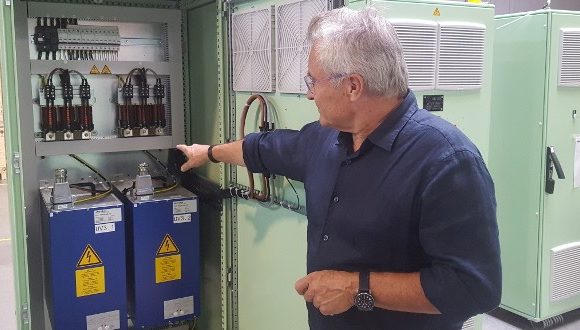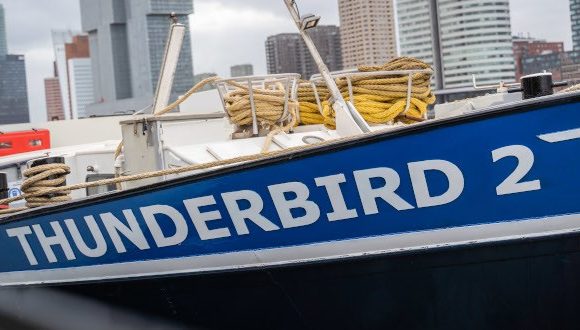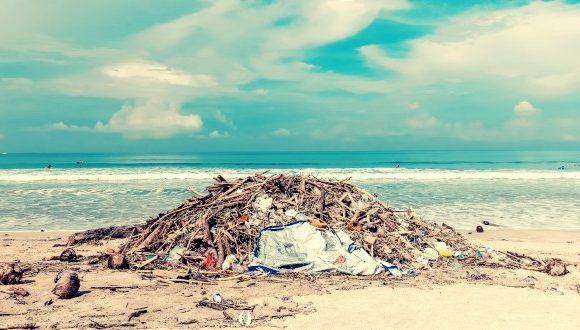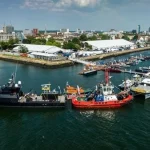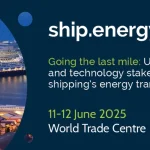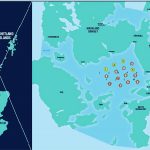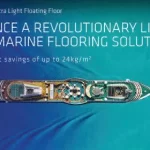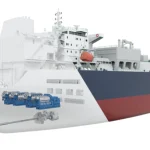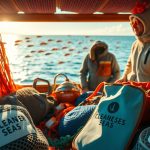Marine Ecology News Digest February 2025
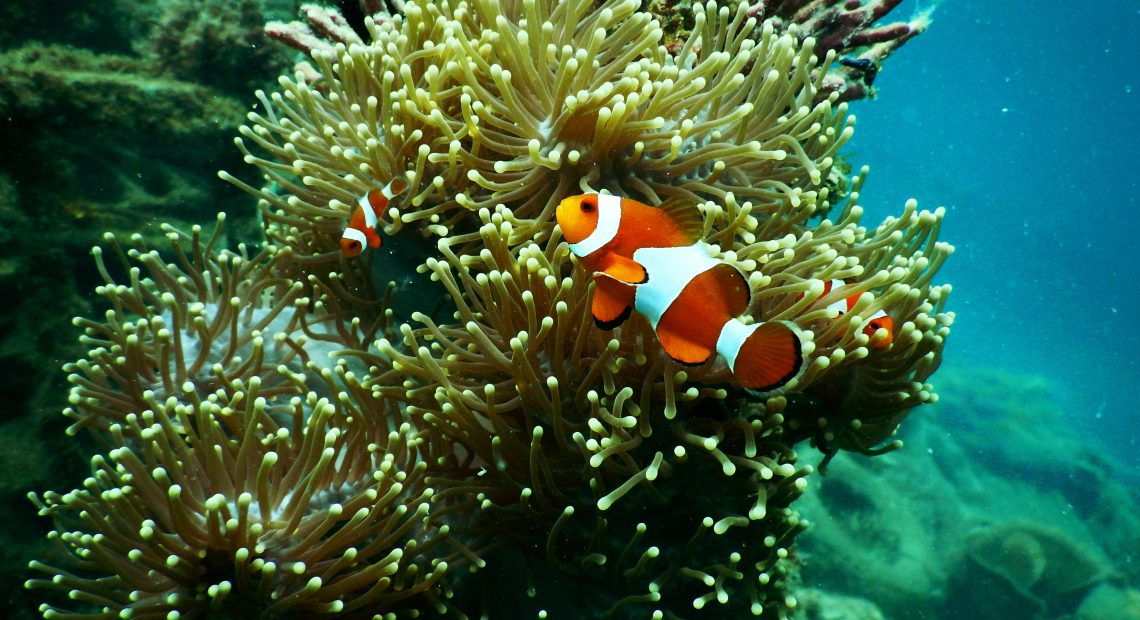
This month, we dive into the latest in ocean science, conservation, and policy changes. You’ll learn about exciting research, new tech, and community efforts shaping our seas’ future.
We’re thrilled to share that Dr Dan Smale, a Senior Research Fellow at the Marine Biological Association, has won the 2025 Hutchinson Award. His groundbreaking work on heatwaves and their impact on biodiversity has set new standards for conservation globally.
This update is packed with insights for maritime experts and leaders. We explore ten key topics, from research to networking, giving you a full view of UK and global marine ecosystems.
Recent Breakthroughs in Marine Research
Early 2025 has seen big steps forward in marine research. Scientists and conservationists have found new ways to understand and protect our oceans. These new methods help us know more and solve big environmental problems.
New Techniques in Coral Restoration
Coral restoration has made huge leaps. New precision fragment placement systems have greatly improved coral survival. These systems use drones to find the best places for coral to grow.
A big win is the use of symbiotic bacteria. These bacteria help corals fight off stress and bleaching. Tests in the Great Barrier Reef show corals with these bacteria survive better during heat waves.
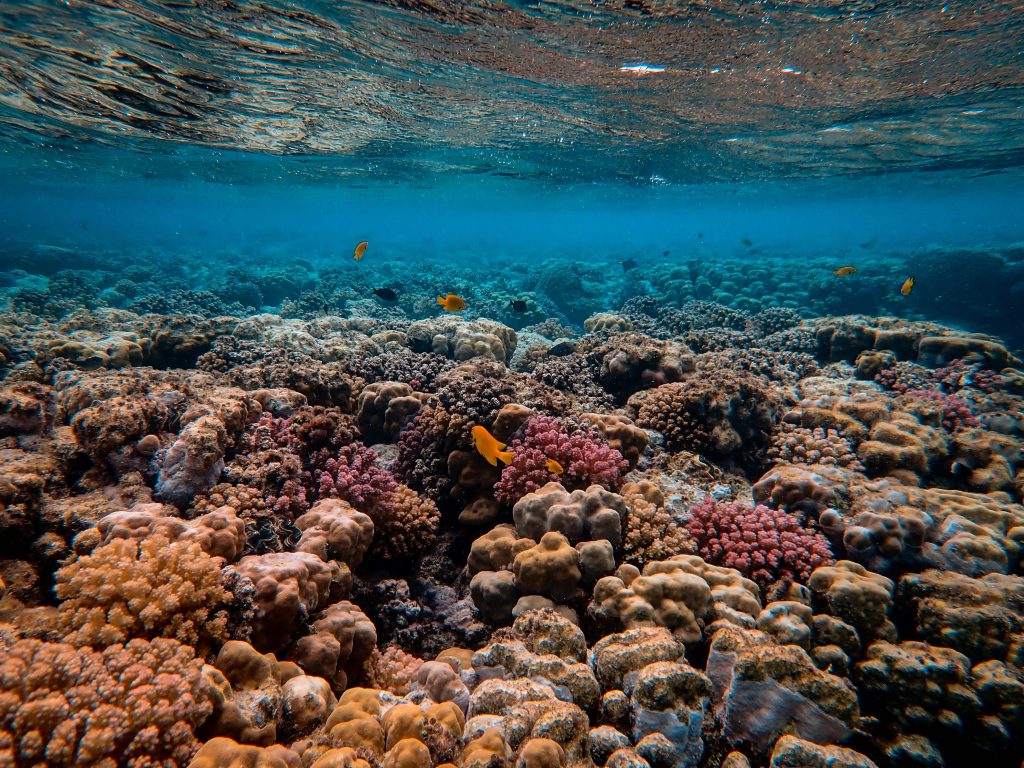
Dr Emma Harrington from Britain says: “We’re giving corals a probiotic boost. It helps them deal with tough conditions. This could change how we save reefs.”
Innovations in Sustainable Fishing Practices
The fishing industry is using new tech to be more eco-friendly. New gear cuts bycatch by up to 85% but keeps catch rates high. This includes nets with escape panels and sound devices to scare away unwanted fish.
Keith Moyle has a big win in the aquarium trade. He bred the Copperband butterflyfish in captivity. This is a big step for sustainable fisheries.
“This success means we can lower the need to catch wild fish,” says Moyle. “It shows how research can help both nature and business.”
These advances in coral and fishing show the power of research. By being creative and practical, scientists are helping us use the ocean wisely and keep it healthy.
Climate Change Impact on Marine Biodiversity
Marine biodiversity is facing big changes due to climate change. This is altering the oceans in ways we’ve never seen before. The latest science shows these changes are happening fast, affecting entire ecosystems.
These changes are a big problem for marine life and for people who rely on the oceans. The maritime sector needs to adapt to these new conditions. This is because these changes affect how they operate and what resources they have.
Dr. Dan Smale has made a big impact on our understanding of these changes. He’s studied marine heatwaves and how they affect marine communities. His work has shown us how climate change can change ocean food webs.
Rising Sea Temperatures and Species Shifts
Ocean warming is a clear sign of climate change’s impact on marine systems. Sea temperatures have gone up by 0.13°C every decade. Some areas have seen even bigger increases.
This warming is causing species to move to new places. Cold-water species are moving towards the poles. Warm-water species are moving into cooler areas. These changes are changing marine communities in big ways.
These changes affect more than just species. They create new interactions in ecosystems. This can disrupt food webs and lead to trophic mismatches.
For the maritime industry, these changes mean they have to adapt. Fishing fleets need to find new species. Coastal infrastructure needs to deal with new ecological conditions.
Ocean Acidification: A Growing Concern
Ocean acidification is another big threat to marine biodiversity. Oceans are getting more acidic as they absorb carbon dioxide. This is changing seawater chemistry in ways we haven’t seen in millions of years.
Studies have shown acidification affects more than just shell-forming organisms. It can impact fish behaviour, reproductive success, and larval development. Even species without calcium carbonate structures are affected by changing ocean pH.
The combination of warming and acidification is creating compound stressors. This means multiple environmental changes happening at once. Some species adapt quickly, while others may face extinction.
These changes need forward-thinking management. Maritime operations need to plan for the future. This might include changing fishing targets, redesigning marine protected areas, or building more flexible infrastructure.
The impact of climate change on ocean biodiversity will only get worse. For the maritime sector, understanding these changes is essential. It’s not just about knowing what’s happening; it’s about adapting to a changing ocean environment.
Groundbreaking Discoveries in Marine Species
Recent expeditions have uncovered amazing discoveries in the ocean. Marine biologists and oceanographers are exploring new areas of our seas. They find species that have lived alone for millions of years.
The last quarter has seen a lot of new discoveries. Teams have found dozens of new organisms. These findings show how important it is to protect these unique places before they change too much.

Newly Identified Marine Organisms
Over 30 new species have been found in just three months. This shows the amazing diversity of ocean ecosystems. These discoveries range from tiny plankton to big deep-sea fish.
Some of the most interesting finds are tiny plankton with special properties. These tiny creatures can live in extreme conditions. They also make compounds that could help in medicine and technology.
Deep-sea expeditions have found many new fish species. These fish have special features for living in deep, dark places. Scientists think there are hundreds more species waiting to be found.
Unique Adaptations in Deep-Sea Creatures
Deep-sea creatures amaze scientists and inspire new technologies. Their ability to glow in the dark is helping make better lights. Their strong bodies are leading to new materials for ships.
One area of research is how creatures talk to each other in the sea. Campbell Robertson studied how clownfish and anemones live together. They have special ways of communicating that let them live together safely.
Robertson found out how clownfish and anemones become friends. They exchange mucus to hide from predators. This helps both species stay safe.
These discoveries are important because they help us understand how life in the sea will change. As the ocean changes, knowing how creatures adapt is key.
These discoveries also help us create new technologies. Nature’s solutions inspire engineers. For example, deep-sea creatures’ strong bodies help make better underwater tools.
Every new species and adaptation is important for science and for helping us solve problems. They show us the value of keeping our oceans healthy. These creatures might help us solve challenges we haven’t thought of yet.
Advances in Marine Conservation Efforts
The world of marine conservation has seen big changes. New projects are making a real difference in oceans worldwide. These efforts show how working together can solve big ocean problems.
Success Stories from Global Conservation Projects
Many marine conservation projects have made big strides. These successes give us hope for the future of our oceans. They show that with the right plan, we can protect marine life.
The Mediterranean monk seal’s numbers have grown by 27% in a year. This is thanks to protection efforts from many countries. They’ve made sure important places for these seals are safe from fishing.

In Wales, efforts to bring back seagrass meadows are paying off. These meadows are good for the planet and for marine life. They help fight climate change and support biodiversity.
What’s special about these projects is how they use old and new knowledge. They combine local wisdom with modern tech. This mix works well in places where people have lived close to the sea for a long time.
- Mediterranean monk seal population recovery (27% increase)
- Welsh coastline seagrass meadow restoration
- Coral reef rehabilitation in Southeast Asia
- Mangrove forest protection initiatives in coastal regions
- Marine protected area expansion in the North Atlantic
Community Involvement in Marine Protection
The best marine conservation projects involve local people. Places where communities manage the sea do better than those where they don’t. This is because local people are more likely to follow rules and protect their home.
Dr Paul Anderson’s work with IndoReefFish shows how important community involvement is. His team has created a way to protect the sea that works for everyone. It balances science with local needs and knowledge.
“When local communities are truly involved in conservation, we see much better results,” says Dr Anderson. “Our approach focuses on clear decision-making and fair sharing of benefits. This builds lasting support for protecting the sea.”
This method also helps by making conservation work for local people. It shows that protecting the sea can also help the local economy. This makes people more likely to support conservation efforts.
The shipping industry is starting to see the value in supporting marine conservation. Big shipping companies are now helping to manage marine protected areas. This partnership between industry, conservation groups, and local communities is a good way to protect more of the sea.
These partnerships show that protecting the sea can also be good for business. When done right, conservation can create jobs and protect the sea for the future.
The Role of Technology in Marine Monitoring
Technology is changing how we watch over coastal areas. Advanced sensors, self-driving vehicles, and AI are helping us understand the sea better than ever. This is key for coastal ecosystems where people and nature meet most.
Remote Sensing and Data Collection
Marine data collection has changed a lot. Satellites now give us daily pictures of coastlines. This lets scientists and managers see changes fast.
These satellites work with many other tools:
- Autonomous underwater vehicles (AUVs) that explore the sea for weeks
- Environmental DNA sampling stations that find species by their DNA in water
- Smart buoy networks that always check ocean chemistry, temperature, and currents
- Acoustic monitoring systems that track marine mammals and ships
Greensea IQ’s Bayonet AUGVs are a big step forward. These underwater vehicles are reliable and versatile. They’re great for monitoring and dredging in coastal ecosystems.
The data from these tools is huge. One research ship can now collect more data in a day than was gathered in 50 years. This means we need new ways to understand it all.
Using AI for Marine Ecosystem Analysis
AI is key for making sense of all this data. It finds patterns in the sea that humans can’t see.
AI is helping marine science and management a lot:
- Finding early signs of coral bleaching
- Tracking changes in plankton that show ocean shifts
- Spotting illegal fishing by tracking ships
- Warning of harmful algal blooms before they start
- Improving marine protected areas based on species data
AI and remote sensing have changed how we respond to the sea. We can now act before problems start, not just after.
For the sea industry, this tech is a big win. It makes operations better and cuts costs. Companies can show they care for the sea with real data.
We expect these tools to get cheaper and easier to use soon. Soon, all sea businesses will use them to care for coastal ecosystems.
How AI is Protecting Marine Life: Smart Tech for Cleaner Seas
Policymaking and Marine Ecosystem Management
In February 2025, marine conservation policy has seen big changes at national and international levels. The new rules show we understand oceans need good governance. These changes aim to protect the sea while using its resources wisely.
Recent Legislative Changes in the UK
The United Kingdom is leading in marine policy with big updates to the Marine and Coastal Access Act. These updates show the UK’s strong commitment to ecosystem-based fisheries management and better environmental protection.
The new law brings several important changes:
- It makes marine spatial planning better for protecting biodiversity
- It requires stricter checks on environmental impacts of offshore projects
- New penalties for breaking rules in protected areas
- More monitoring to see if policies work
- Easier permits for projects that restore the sea
The UK also set up new funding to help businesses go green. The Marine Conservation Innovation Fund gives £75 million to companies using eco-friendly tech and practices.
“These changes are a big step forward in managing marine resources,” says Dr. Emma Thornton, a marine policy advisor at the UK Environment Agency. “We’re moving from just saying no to saying yes to conservation.”
International Agreements on Marine Conservation
On the global level, big agreements have been made that will change marine conservation for years. The most important is the High Seas Treaty, which sets up rules for marine protected areas in international waters.
This treaty fills a big gap in ocean management by covering areas beyond national control. For the first time, almost two-thirds of the world’s oceans will have strong protection.
Other global developments include:
- The Pacific Rim Marine Conservation Accord, which sets standards for 14 countries
- The Global Ocean Alliance now has 87 countries aiming to protect 30% of oceans by 2030
- New rules for green shipping from the International Maritime Organization
- The International Marine Conservation Tribunal to solve disputes
These global agreements bring both challenges and chances for sea nations. While there are more rules, having the same standards everywhere makes things easier for businesses that work across borders.
To deal with these complex rules, proactive engagement with regulations is key. Companies that think ahead are getting ready for future rules, not just reacting to them.
The mix of national laws and global agreements has led to creative solutions. For example, changes in shipping tariffs encourage ships to be greener while keeping trade competitive.
As these policies keep changing, the marine conservation world is hopeful. They believe better rules will help fix the damage done to the oceans. Now, the challenge is to make sure these rules are followed and enforced well.
The Importance of Public Awareness Campaigns
Public engagement is key to protecting our oceans. Studies show that when people connect with marine life, conservation works better. Awareness campaigns now aim to change behaviour, helping our oceans.
Support from the public is vital for ocean protection. These campaigns build a sense of responsibility in coastal communities. This leads to strong support for marine conservation.
Engaging the Community in Marine Protection
New ways to engage the public are making a big difference. Localised messaging is very effective. It links protecting our oceans to local interests and jobs.
When people see how their actions affect the ocean, they get involved more. For example, showing how healthy coasts help local fishing has won support in the UK.
Community science programmes are powerful tools. They let people collect data that helps make conservation decisions. This approach has many benefits:
- More data than scientists could get alone
- People learn about science and marine life
- They develop a bond with local coasts
- They become champions for ocean protection
- It’s a cost-effective way to monitor the ocean
The UK’s Marine Conservation Society has run many citizen science projects. They monitor beach litter, track marine life, and check water quality. These projects have given us valuable data and engaged citizens.
Educational Initiatives for Schools
Teaching marine conservation early helps people care for the ocean later. School-based programmes are a big investment in ocean protection. Hands-on learning and classroom activities build lasting connections to the sea.
Some UK marine education programmes have won awards. The “Blue Schools” initiative is a great example. It combines marine science with arts and culture, engaging students from all backgrounds.
These programmes include:
- Field trips to the coast for learning
- Classroom activities based on real marine issues
- Creative projects to share marine protection messages
- Meetings with marine conservation experts
- Student-led campaigns on local marine issues
The maritime industry can support these efforts. They can offer tours, mentorship, and help develop curricula. This not only improves education but also prepares the next generation of ocean stewards.
By focusing on public awareness and education, the marine sector gains the trust it needs. As people watch ocean activities more closely, those who protect the coast will keep public support.
Marine Pollution Trends and Solutions
Scientists and engineers are working hard to solve the pollution problem in our oceans. Our oceans are facing big challenges, but new solutions are being found. These solutions could help our oceans recover.
The link between pollution and climate change impacts is clear. Warmer oceans change how pollutants work, making them more harmful. We need solutions that tackle both pollution and climate change.
Plastic Pollution: Innovations in Mitigation
Plastic pollution is a huge problem for our oceans. Microplastics are found everywhere, from shallow waters to deep trenches. They harm marine life and our health.
New technologies offer hope. Enzymes can break down plastic waste into safe compounds. These enzymes are made to work faster, helping to solve the plastic problem.
Advanced filters are also helping. They catch tiny particles, stopping them from polluting the ocean. In the UK, these filters have cut microplastic pollution by up to 90%.
People are also playing a big role. Beach clean-ups use apps to help volunteers. This shows how technology and community action can work together to fight pollution.
Oil Spills and Their Long-Term Effects
Oil spills get a lot of attention, but their lasting effects are often overlooked. Studies show that spills can harm marine life and coastal areas for decades. Prevention is key.
Preventing and responding to oil spills has improved a lot. New systems can contain oil better and faster. This means less damage to the ocean.
Bioremediation is another important tool. It uses special microbes to clean up oil spills. This method helps get rid of oil that’s hard to clean up.
The maritime industry is now focusing on being more sustainable. Companies like Thordon Bearings are leading the way. They see that fighting pollution and climate change go hand in hand.
Rules to protect our oceans are getting stronger. The UK has set strict rules for ocean pollution. These rules, along with new technologies and community efforts, will help tackle pollution in the future.
Upcoming Conferences and Events in Marine Ecology
The first half of 2025 is packed with chances for experts to dive into the latest in ocean science. The Marine Ecology News Digest February 2025 calendar lists key events for researchers, conservationists, and industry partners.
Key Speakers and Their Research Topics
The Marine Ecology Symposium in Edinburgh (April 2025) is a highlight. Dr. Dan Smale will talk about marine heatwaves and their effects on coastal areas. His work has influenced policies in the UK and worldwide.
Other topics include deep-sea mining and new eDNA monitoring methods. These could change how we track biodiversity.
Opportunities for Networking and Collaboration
These events are key for building research partnerships and cross-sector projects. A workshop on marine protected area metrics will unite scientists and policymakers. A session on the High Seas Treaty will give insights for conservation groups.
More maritime industry reps are joining, showing a move towards better ocean care. Check our website for the full events calendar, how to register, and scholarship info. We invite all to join these forums where future marine conservation solutions are discussed.

